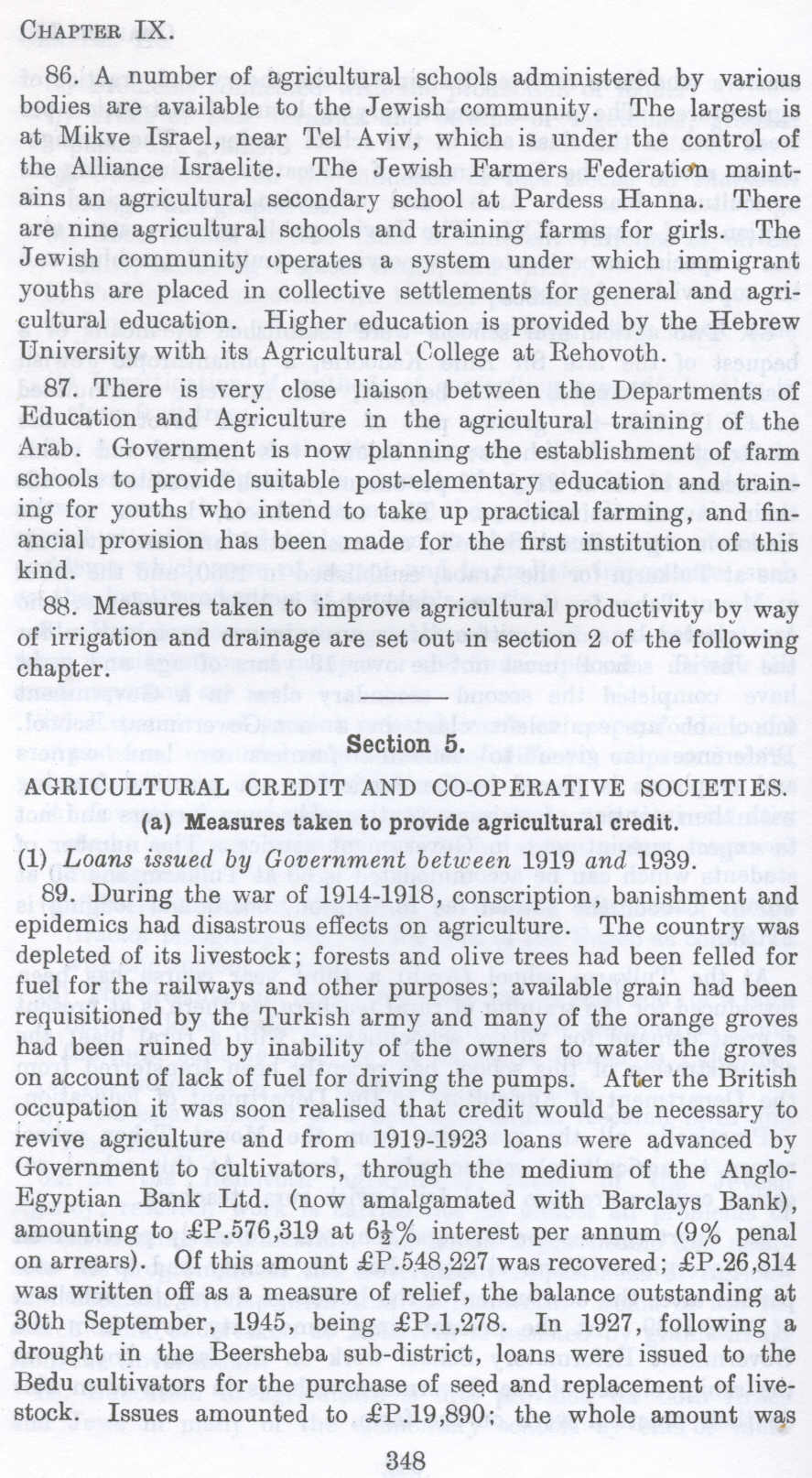| Prev | Next |  |
| Prev | Next |
| PalestineRemembered | About Us | Oral History | العربية | |
| Pictures | Zionist FAQs | Haavara | Maps | |
| Search |
| Camps |
| Districts |
| Acre |
| Baysan |
| Beersheba |
| Bethlehem |
| Gaza |
| Haifa |
| Hebron |
| Jaffa |
| Jericho |
| Jerusalem |
| Jinin |
| Nablus |
| Nazareth |
| Ramallah |
| al-Ramla |
| Safad |
| Tiberias |
| Tulkarm |
| Donate |
| Contact |
| Profile |
| Videos |
Agricultural Credit and Co-operative Societies in Palestine before 1948 (Nakba), (a) Measures Taken by the Government of Palestine to Provide Agricultural Credit. British Mandate: A Survey of Palestine: Volume I - Page 348. Chapter IX: Agriculture: Section 5 |
Disclaimer
The above documents, article, interviews, movies, podcasts, or stories reflects solely the research and opinions of its authors. PalestineRemembered.com makes its best effort to validate its contents.


Post Your Comment
*It should be NOTED that your email address won't be shared, and all communications between members will be routed via the website's mail server.
86. A number of agricultural schools administered by various bodies are available to the Jewish community. The largest is at Mikve Israel, near Tel Aviv, which is under the control of the Alliance Israelite. The Jewish Farmers Federatien maintains an agricultural secondary school at Pardess Hanna. There are nine agricultural schools and training farms for girls. The Jewish community operates a system under which immigrant youths are placed in collective settlements for general and agricultural education. Higher education is provided by the Hebrew University with its Agricultural College at Rehovoth.
87. There is very close liaison between the Departments of Education and Agriculture in the agricultural training of the Arab. Government is now planning the establishment of farm schools to provide suitable post-elementary education and training for youths who intend to take up practical farming, and financial provision has been made for the first institution of this kind.
88. Measures taken to improve agricultural productivity by way of irrigation and drainage are set out in section 2 of the following chapter.
Section 5.
AGRICULTURAL CREDIT AND CO-OPERATIVE SOCIETIES. (a) Measures taken to provide agricultural credit.
(1) Loans issued by Government between 1919 and 1939.
89. During the war of 1914-1918, conscription, banishment and epidemics had disastrous effects on agriculture. The country was depleted of its livestock; forests and olive trees had been felled for fuel for the railways and other purposes; available grain had been requisitioned by the Turkish army and many of the orange groves had been ruined by inability of the owners to water the groves on account of lack of fuel for driving the pumps. After the British occupation it was soon realised that credit would be necessary to revive agriculture and from 1919-1923 loans were advanced by Government to cultivators, through the medium of the Anglo Egyptian Bank Ltd. (now amalgamated with Barclays Bank), amounting to £P.576,319 at 6!% interest per annum (9% penal on arrears). Of this amount £P.548,227 was recovered; £P.26,814 was written off as a measure of relief, the balance outstanding at 30th September, 1945, being £P.l,278. In 1927, following a drought in the Beersheba sub-district, loans were issued to the Bedu cultivators for the purchase of seed and replacement of livestock. Issues amounted to £P .19 ,890; the whole amount was
Page 348